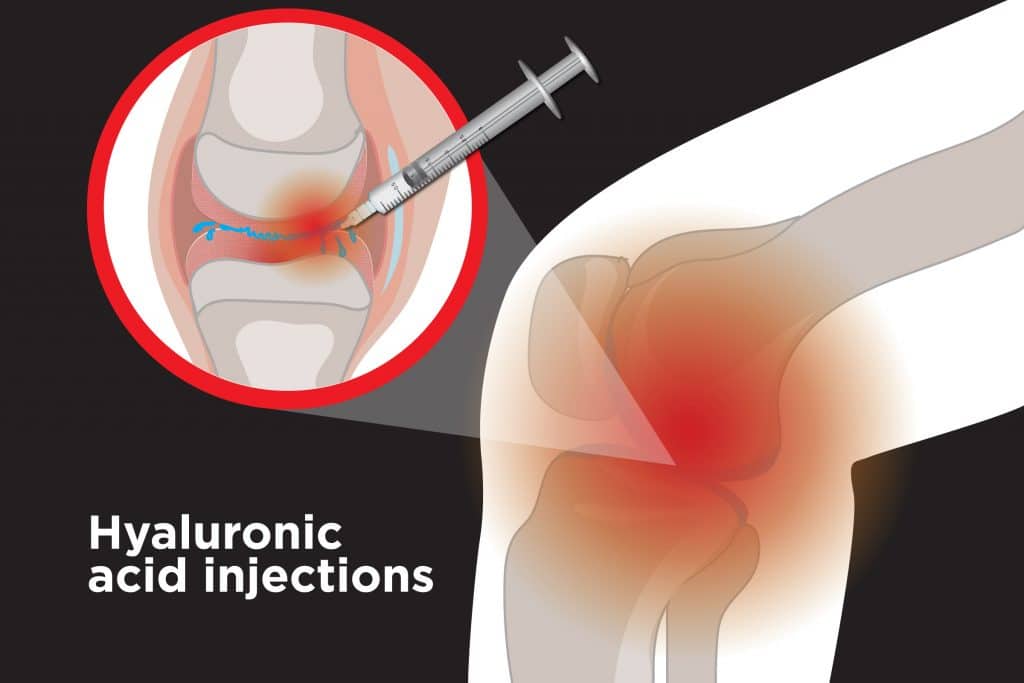Medicare and Medicaid are two separate US government-funded insurance programs that provide different health coverage plans. Both Medicare and Medicaid provide coverage for a range of pain management therapies and treatments.
Medicaid pain management and pain management doctors that accept Medicare in Brooklyn, NYC usually cover traditional pain management therapies and services such as physical therapy, occupational therapy, chiropractic spinal manipulation, and acupuncture for chronic low back pain. Therefore patients who do suffer from chronic neck or back pain or knee arthritis should seek medical attention to see what clinically can be done for them.
Pain management Brooklyn coverage by Medicare or Medicaid depends on where you live in the US. It’s not always easy to know which pain therapies are covered by Medicare and which are not. Some pain therapies that may or may not be covered by insurance include TECAR, Shockwave Therapy, Cold Laser Therapy, Cryotherapy, and others.
Of course, you also need to choose a pain therapist that accepts Medicaid and Medicare. At our “Pain Therapy Medical Care” pain management clinic in Brooklyn, New York, we work closely with different insurance providers, including Medicare and Medicaid for pain managemement, who can cover your pain management plan and assist you in living a pain-free life.
What Is Medicare?
Medicare is a health insurance program managed by the federal government in the United States. It covers people 65 or older, certain younger people with disabilities, and people with End-Stage Renal disease.
Medicare is divided into 4 parts that cover different specific health services:
- Medicare Part A: Hospital insurance that covers inpatient hospital stays, care in a skilled nursing facility, hospice care, and some home health care.
- Medicare Part B: Medical insurance that covers certain doctor’s services, outpatient care, medical supplies, and preventive services. This part of Medicare usually covers non-surgical and non-opioid pain treatments, such as physical therapy, occupational therapy, or pain injections.
- Medicare Part C: This is a form of private insurance also known as “Medicare Advantage Plans”.
- Medicare Part D: Prescription drug coverage helps cover the cost of certain prescription drugs. This also includes pain medications – an important part of your pain management plan.
Original Medicare (Parts A & B) becomes available once you turn 65 but doesn’t cover everything – namely routine prescription drugs, vision, and hearing. However, you can enroll in optional Medicare health plans including Medicare Part D, Medicare Advantage Plans (Part C), and Medigap (supplement insurance).
A Medicare health plan near you for pain management is usually provided by a private insurance company that contracts with Medicare to provide you with Medicare Part A and B benefits after you enroll.
Medicare usually covers many pain management plans considered necessary to live a pain free life – such as physiotherapy and acupuncture. You can ask your Medicare provider which pain reducing therapies are covered by your plan.
Most importantly, you need to find a pain doctor that takes Medicare. Our New York clinic is one of the top pain management clinics that accept Medicare and Medicaid plans. You can call us anytime to ask about our services and learn more about Medicare and Medicaid coverage for the therapies we provide.
What Is Medicaid?

Medicaid pain management, another government-run program, may provide secondary insurance along with Medicare to help you pay the costs of services not covered by Medicare. Medicaid is a federal-state program that assists low-income individuals and families with their medical expenses.
Medicaid is a “payer of last resort” – this means that if a person has a different type of insurance, such as Medicare, Medicaid will handle some of the expenses that are not picked up by your primary insurance.
Medicaid for pain management usually covers a variety of pain management therapies for a wide range of painful musculoskeletal conditions. Knowing what pain management services are covered by medicare is not always straightforward though.
Of course, Medicaid will not cover services they consider medically unnecessary or unreasonable.
Does Medicare Cover Pain Management Plans?
To receive Medicare coverage for your pain management therapy, you will need to see a Medicare-enrolled doctor.
Medicare covers some of the therapies and services used in traditional pain management. Medicare Part B will usually cover the following pain management services:
- Physical therapy: If physical therapy (PT) is prescribed to you by your doctor to manage acute or chronic pain, it may be covered by Medicare Part B. Physical therapy is an effective alternative to surgery for the treatment of different painful musculoskeletal conditions (e.g. arthritis, arthrosis, back pain, trauma). It’s also a safer alternative that avoids the risks posed by surgery or long-term use of pain meds or steroids. Your Medicare Plan B will usually cover physical therapy if it’s deemed medically necessary.
- Occupational therapy: Medicare Part B may help pay for your outpatient occupational therapy (OT), which can help reduce pain and improve quality of life, if it’s deemed medically necessary by your doctor or healthcare provider. Occupational therapy is considered a key conservative treatment approach that can help patients adapt to their conditions, improve their daily performance, and elevate their quality of life. That’s why occupational therapy is included in Medicare Part B.
- Acupuncture for chronic low back pain: Medicare may cover up to 12 acupuncture visits over 90 days if they’re medically necessary to treat your chronic low back pain. In case you show improvement, you might receive 8 additional sessions of acupuncture. However, Medicare will not usually cover acupuncture to treat other painful conditions such as chronic muscle pain. Evidence has consistently shown that acupuncture is effective in the relief of chronic low back pain, and hence it’s included in Medicare coverage.
- Chiropractic spinal manipulation: Medicare Part B may also cover limited spinal manipulation only if considered medically necessary to correct a subluxation (spinal vertebrae that’s out of position). Research has pointed out significantly reduced pain and positive outcomes in patients following chiropractic spinal manipulation.
These pain management therapies, and others, are usually covered by Medicare Part B. Keep in mind that you’ll still have some out-of-pocket expenses, namely the co-insurance, which is 20% of the therapy costs, as well as the annual deductible.
Does Medicaid Cover Pain Management Plans?
Medicaid coverage varies from state to state, and from city to city. However, similar to Medicare, the following pain management-related services are commonly covered by Medicaid:
- Physical therapy
- Occupational therapy
- Chiropractic services
- Acupuncture for low back pain
In addition, depending on the area you live in, Medicaid may help pay for other pain management treatments in our pain management clinic near you, which are not covered by Medicare, including therapeutic injections.
Therapeutic injections are commonly used to treat joint and back pain and include epidural steroid injections and joint injections. These injections offer an effective pain management modality and a safer alternative to surgery – and they are, in many cases, eligible for Medicaid coverage.
Dr. Henry pain management doctor, performs ultrasound or X-ray guided injections at our pain management center in New York. He uses the latest technologies to deliver the injectable treatment directly into the source of pain.
At our pain management clinic in Brooklyn New York, patients with Medicare, Medicaid, and any insurance coverage are all welcome.
How Do I Find Out If My Medicaid Covers a Pain Management Plan?
As already mentioned, Medicaid differs from one state to another, and one city to another. Knowing what pain management therapies are covered by your Medicaid plan is oftentimes challenging. There are several ways you can find out if your Medicaid covers certain pain management therapies:
- Check your Medicare provider’s website. Many times, you will be able to find out what pain management plans are covered by Medicaid simply by checking online on your provider’s website. Search for specific therapies, like physical therapy, occupational therapy, acupuncture Medicaid coverage.
- Call your Medicaid provider and ask the service agent about specific therapies: “Is Shockwave Therapy covered by my Medicaid?”, “Does Medicaid cover steroid injections for pain?”, etc.
- Find a pain doctor near you that accepts Medicaid, call their clinic, and ask about Medicare coverage for different pain plans.
Other Pain Management Options
In the past few years, pain medicine has seen a lot of technological breakthroughs and advancements in pain therapy.
At Pain Therapy Medical Care in Brooklyn, New York, Dr. Henry Sardar and his team of pain specialists offer several advanced pain management techniques that have been successful in delivering fast and effective pain relief. We use the latest technologies the field has to offer.
These include shockwave therapy, laser therapy, cryotherapy, and more. Although more natural, more healthy, and with fewer side effects than other pain treatments, these modalities may or may not be covered by Medicare or Medicaid.
Moreover, Medicare and/or Medicaid coverage may vary from plan to plan. So, you’ll need to do some research and ask your provider if the following treatments are covered by your Medicare or Medicaid plan or not:
- Electromagnetic Transduction Therapy (EMTT)
- Perineural Injection Therapy (PIT)
- TECAR therapy
- Platelet-Rich Plasma (PRP) Therapy
- Cold Laser Therapy
- Shock Wave Therapy
- Cryotherapy
The available studies on advanced pain therapies (e.g. TECAR, Cold Laser, Shockwave Therapy) have shown great promise. Our patients have greatly benefited from these groundbreaking treatments, which were able to significantly decrease their pain and improve the quality of their lives.
The delay in incorporating advanced pain management modalities into Medicare and Medicaid coverage is sadly preventing many patients from receiving the efficient pain therapy plan they need. Advanced pain therapy options can provide patients with safer pain relief that they cannot otherwise receive with surgery or steroid injections alone.
In all cases, Dr. Sardar knows this, and wants all his patients to test these pain therapies for themselves, whether they’re covered by insurance or not. We believe that these advanced therapies will offer you the pain relief that other therapy options can’t. Your insurance coverage should not be a limiting factor when it comes to living a pain free life, with minimal side effects from treatment!
Other Health Insurance Providers That Cover Pain Management
Several other insurance providers in the United States may cover your pain therapy depending on your condition, your pain management plan, and your pain management specialist.
Our pain management clinic in Brooklyn, New York accepts the following insurance providers: HealthFirst, Affinity Group, Fidelis Care, Metro Plus, United Health Care Community Plan, Amerigroup, New York State Medicaid, and BlueCross / BlueShield Medicaid Plan.
These insurance providers cover most traditional pain management techniques, including guided injections, as long as they’re medically recommended by your orthopedic surgeon, physical therapist, or primary care provider.
At our Pain Therapy Center in Brooklyn, New York, we do our best to provide pain management plans regardless of your insurance coverage. Dr. Sardar gives all his patients the chance to try out advanced pain relieving modalities to test their benefits for themselves. Contact us to learn more about the services we provide and book an appointment today!




